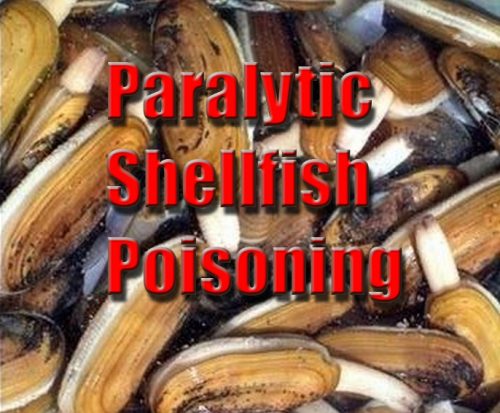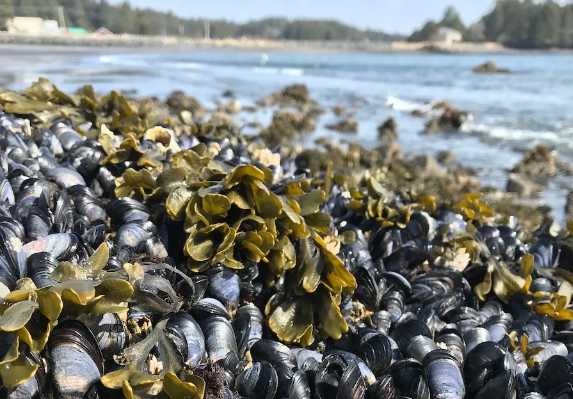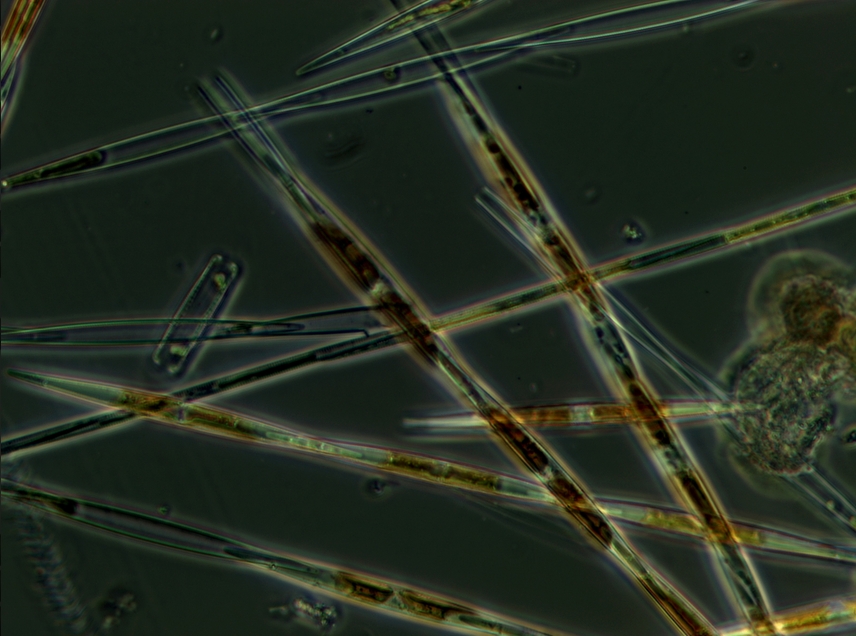
A new bulletin published by Alaska Sea Grant summarizes research to inform the public and help them understand the risk of paralytic shellfish toxins in Arctic Alaska food webs and marine mammals.
Paralytic shellfish toxins—also called saxitoxins—are produced by microscopic marine algae and can cause paralytic shellfish poisoning (PSP) when people consume shellfish or marine mammals that eat shellfish. Ocean warming trends have increased the risk of toxic algal blooms and PSP for marine wildlife and coastal communities of western and northern Alaska.
During the unusually warm summer of 2019, scientists measured paralytic shellfish toxin concentrations in different layers of the food web, looking at phytoplankton, zooplankton, benthic clams, benthic worms and pelagic fish. They also examined samples from walruses and bowhead whales harvested for subsistence in the Bering, Chukchi and Beaufort seas.
Findings from the study include:
- Clams had higher toxin concentrations than other layers of the food web, and some clams collected in the Beaufort, Chukchi and Bering Seas contained toxin concentrations above commercial seafood safety regulatory limits.
- Walruses feed on clams and have higher toxin doses than bowhead whales that feed on zooplankton.
- Estimated daily toxin doses to walruses in summer 2019 were in the range of doses known to have health impacts in other mammals. Additional studies are ongoing to determine whether walruses are experiencing health impacts.
- Muscle and blubber of marine mammals are unlikely to accumulate saxitoxin in levels that pose a human health hazard. However, ongoing studies are underway to determine if other walrus tissues or organs may accumulate saxitoxins.
The bulletin Saxitoxin in western and northern Alaskan food webs + estimated doses to walruses and bowheads during warm ocean conditions of 2019 is available now as a free download from the Alaska Sea Grant bookstore.
Gay Sheffield, Alaska Sea Grant’s Marine Advisory Program agent for the Bering Strait region, contributed to the bulletin. This work is part of a larger, multi-year effort (Trophic Transfer and Effects of HAB Toxins in Alaskan Marine Food Webs) led by Dr. Kathi A. Lefebvre of the NOAA Northwest Fisheries Science Center. Other collaborators include the Woods Hole Oceanographic Institute, North Slope Borough Department of Wildlife Management, and the US Fish and Wildlife Service. The project is funded through the National Centers for Coastal Ocean Science’s Ecology and Oceanography of Harmful Algal Bloom program and seeks to better understand harmful algal blooms in Alaskan waters and the potential risks to human health.
Learn more about the project in these journal publications:
Harmful Algal Blooms in the Alaskan Arctic: An Emerging Threat as the Ocean Warms (Oceanography)
Source: Alaska Sea Grant








